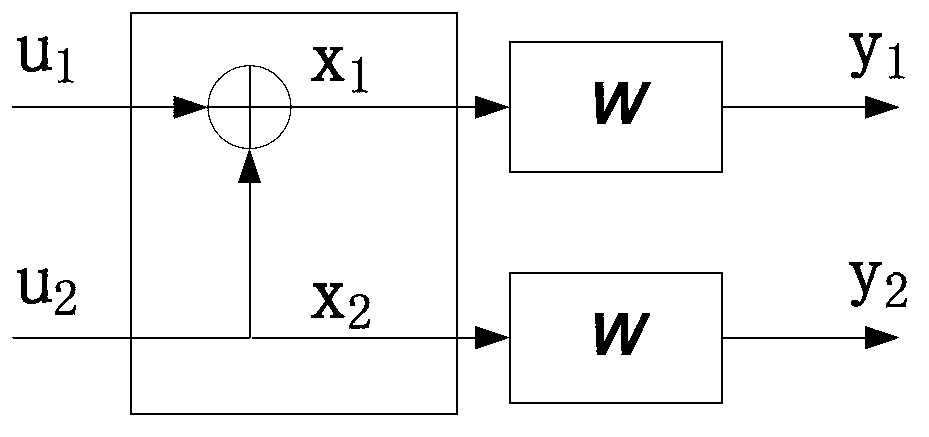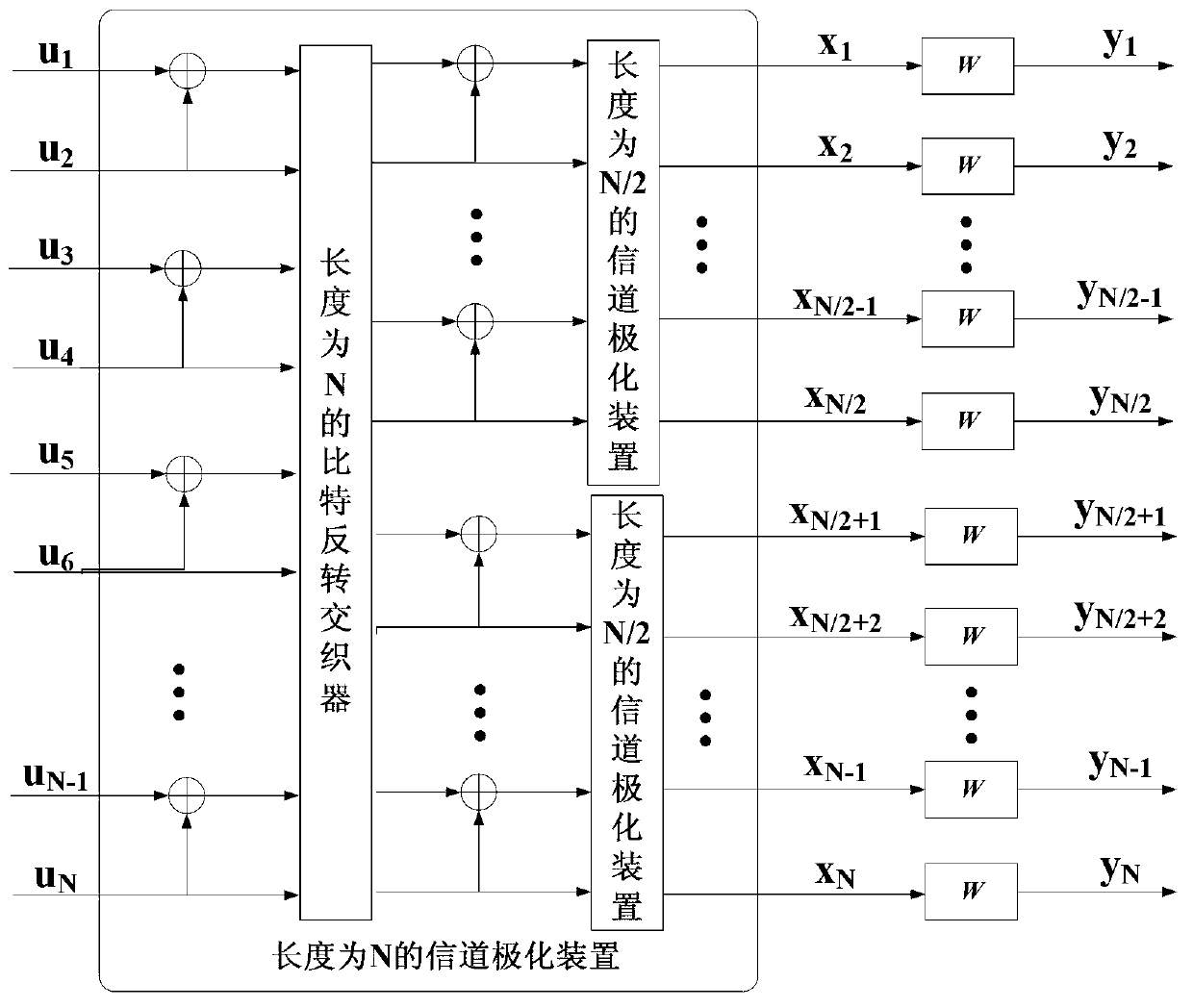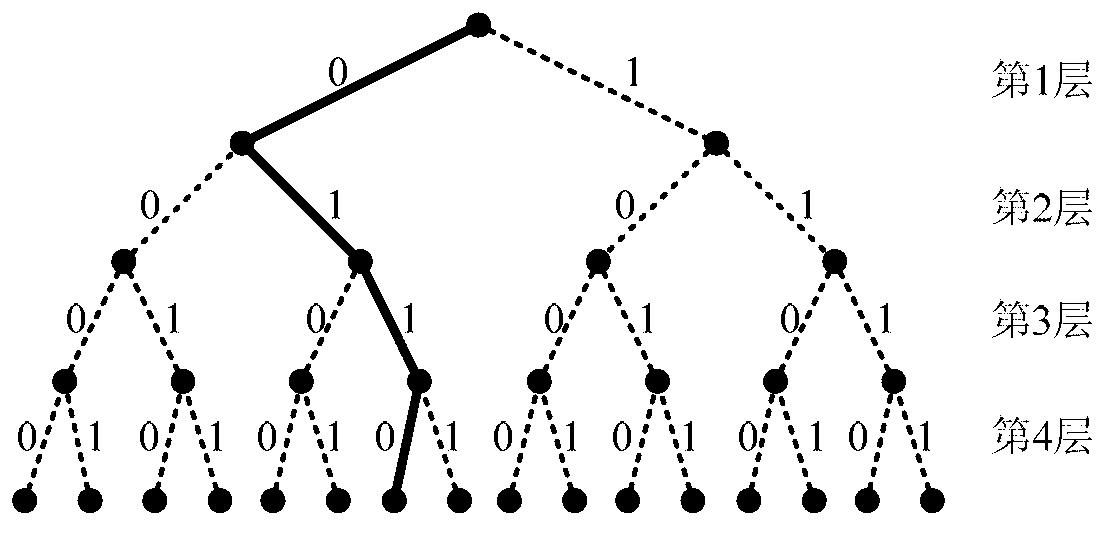Hybrid automatic repeat request transmission method based on polarization code
A technology of hybrid automatic retransmission and transmission method, which is applied in the field of channel coding of digital communication, can solve problems such as large system throughput and channel capacity, not particularly bad channels, and limited adjustment range of code length, etc., to achieve improved The probability of correct decoding, overall complexity reduction, and the effect of accurately estimating throughput
- Summary
- Abstract
- Description
- Claims
- Application Information
AI Technical Summary
Problems solved by technology
Method used
Image
Examples
Embodiment Construction
[0043] In order to make the object, technical solution and advantages of the present invention clearer, the present invention will be further described in detail below in conjunction with the accompanying drawings.
[0044] The operation content of the hybrid automatic repeat request (HARQ) transmission method based on the puncturing polar code of the present invention is: the signal transmitting end performs a polar coding on the information bit sequence to be sent, and the obtained coded bits are punctured and are Send it into the channel for transmission; the signal receiving end decodes the received signal, and performs a cyclic redundancy code (CRC) check on the decoding result; if the verification is passed, the signal receiving end sends a confirmation to the sending end through the feedback link (ACK) signal; otherwise, send a non-acknowledgment (NACK) signal to the sending end; if the sending end receives the NACK signal, part of the information bits will be sent direc...
PUM
 Login to View More
Login to View More Abstract
Description
Claims
Application Information
 Login to View More
Login to View More - R&D
- Intellectual Property
- Life Sciences
- Materials
- Tech Scout
- Unparalleled Data Quality
- Higher Quality Content
- 60% Fewer Hallucinations
Browse by: Latest US Patents, China's latest patents, Technical Efficacy Thesaurus, Application Domain, Technology Topic, Popular Technical Reports.
© 2025 PatSnap. All rights reserved.Legal|Privacy policy|Modern Slavery Act Transparency Statement|Sitemap|About US| Contact US: help@patsnap.com



